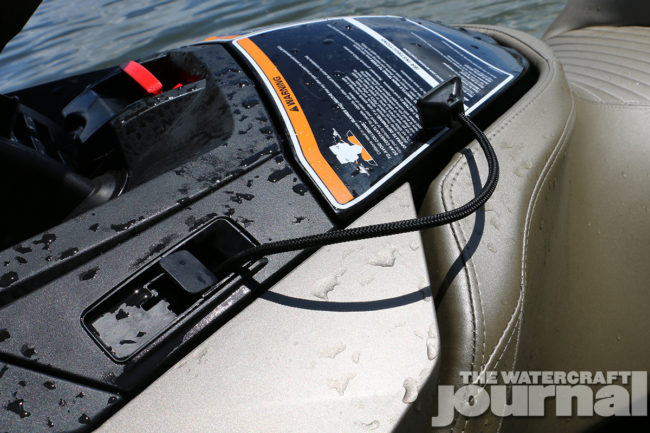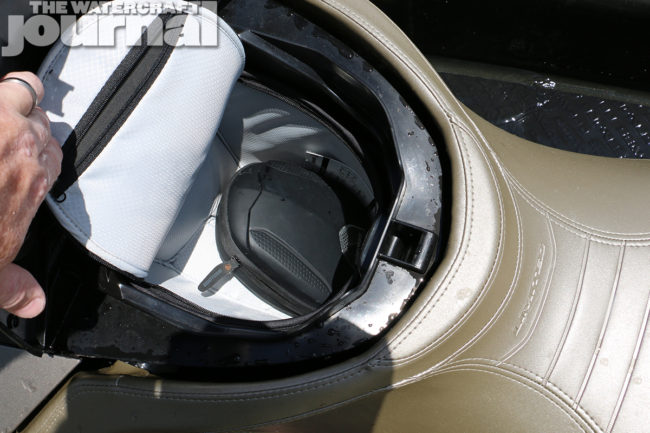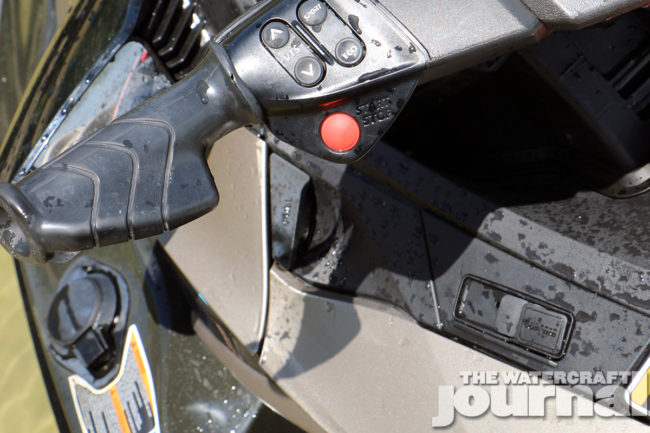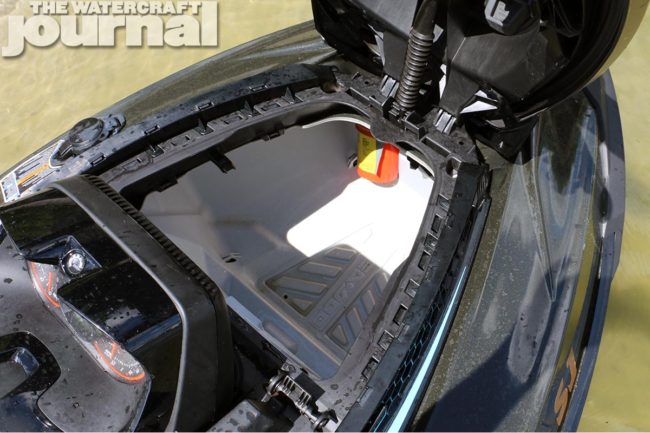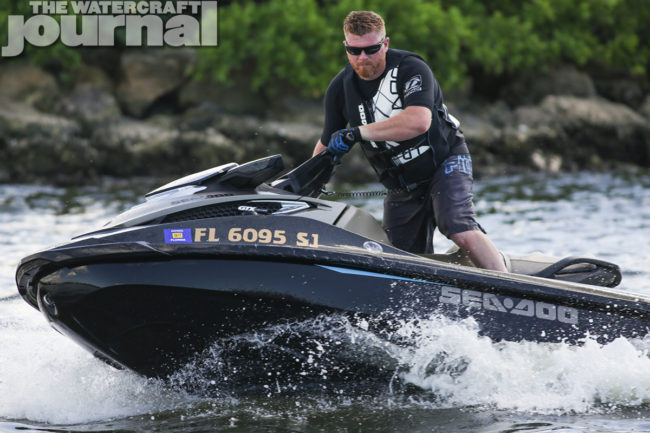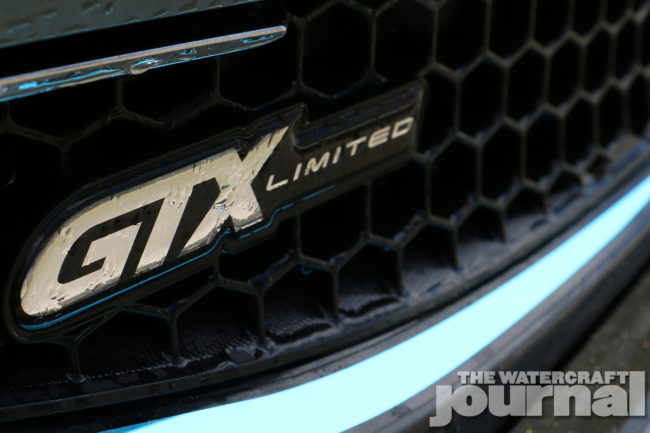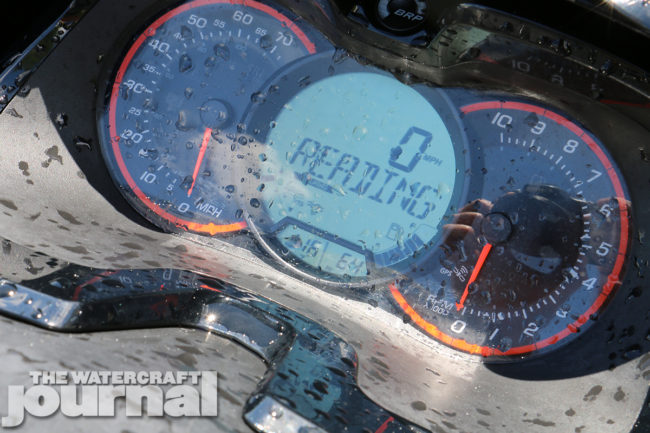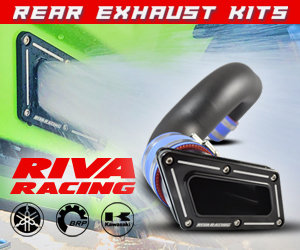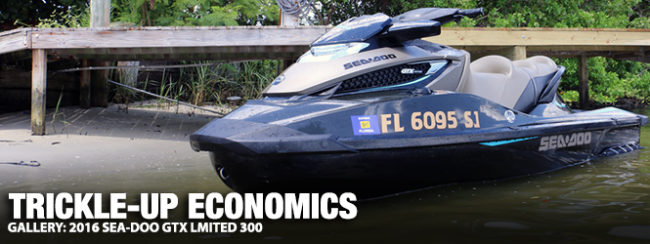
It’s hard to deny that the 2016 Sea-Doo GTX Limited 300 is the culmination of a long fruition of 8 years of product development, technological achievement and marketplace-based refinement. So much of this machine exists because of other models before it that it’s nearly the successor to a near-decade’s long evolution of product. And while this might sound like we’re gushing, there are some very good reasons to heap some serious praise onto what is effectively the most luxurious performance Sea-Doo that the brand could muster.
In 2008, with the advent of the brand’s Intelligent Suspension (iS) innovation also came its S3 hull. The stepped design pulled from offshore “cigarette” race boats, incorporating three escalating tiers with an elongated V-hull (139.2-inches long). This was done to help break suction for better speed and turning. The deeper keel permits the GTX to glide through low to moderate chop with ease. This same hull graced both the performance 3-seater RXT and luxurious GTX models, be them with suspension or without, and proved itself a respectable contender in both offshore and rough water riding.

With the advent of the Spark and its ACE (Advanced Combustion Efficiency) engine design in 2013 gave way to the subsequent redesign of the 1503 4-Tec 3-cylinder last year, birthing the 2016 GTX Limited 300. Wielding the mightiest powerplant the watercraft maker has ever offered, the 1.6-liter four-stroke ACE 300, a heavily re-engineered version of the outgoing plant, the GTX’s the new 1630.5cc features the same 100mm bore of the 1503, but an increased 69.2mm stroke (over the previous 63.4mm), providing 9-percent more displacement, and subsequently, 15-percent more power.
Redesigned pistons are bigger but 20 grams lighter and feature longer, coated skirts, and ride atop lighter, shorter connecting rods. Key to the ACE redesign is the use of a coated cylinder wall, not a pressed-in steel sleeve. A new plasma coating (applied via a proprietary thermal spraying process) was exclusively developed by Rotax’s team in Gunskirchen, Austria, to replace the heavy steel sleeves, not only cutting engine weight, but improving surface durability and heat transference, all while minimizing friction.
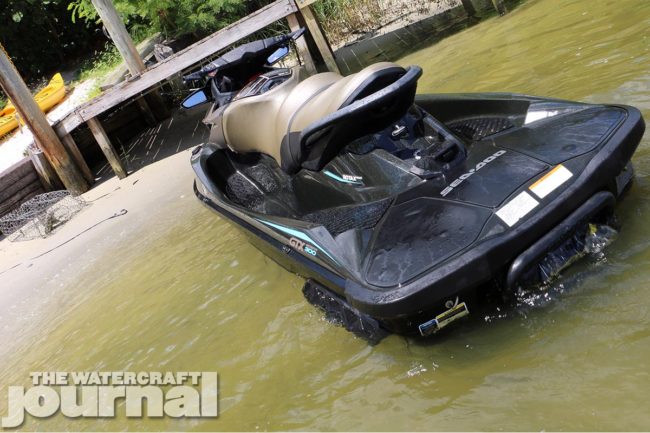
The new ACE engine also touts a redesigned single-camshaft valvetrain configuration: The cylinder head has been redesigned with a new and more efficient combustion chamber quench, larger injectors, and direct-ignition high-intensity coils that produce double the ignition energy as before; providing a hotter, cleaner and more efficient burn. Combined with an additional cooling circuit, a hybrid dry sump oiling system, larger heat extractor, and a new, larger intercooler that is 2.2-times more efficient with over double the cooling capacity, totals up to 33-percent improved engine cooling.
But most dramatic was the complete redesign of the newly minted “maintenance-free” centrifugal supercharger. Producing an impressive 30-percent more boost (18psi) via a more efficient, compact wheel that spins 8-percent faster at 47,000rpm, the new wheel features double the blades of the outgoing design – increased from 16 to 32 – and features a revised drive shaft with 8 steel washers and two composite bearing packs at either end of a near inch-thick shaft.
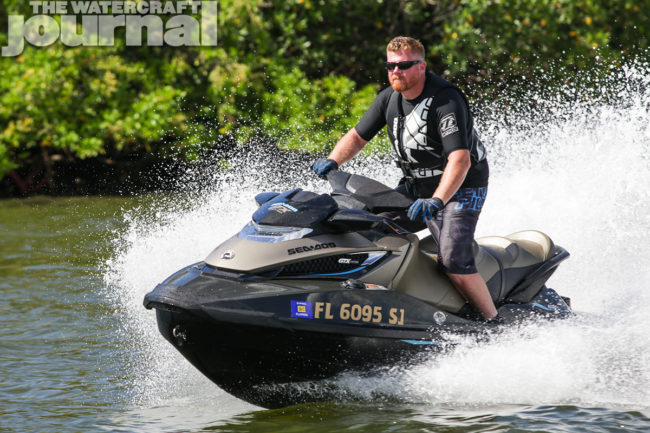
The result of all of this is a dramatic increase in throttle response over the outgoing GTX Limited 260, providing the luxurious performer halting acceleration and an ever-escalating torque curve that peaks at a United States Coast Guard-mandated 68mph (we reached a best sustained speed – not peak – of 68.4mph at 7,700rpm). Remember, this is a big craft – when dry, the GTX Limited 300 tips the scales at 909-pounds – and with a full 15.9-gallon tank, pushes closer to 1,200-pounds when laden with a rider and a few pounds of cargo.
The GTX Limited is also the recipient of Sea-Doo’s class-leading ergonomics, specifically its Ergolock seat, first introduced to the public on the race-bred RXP-X in 2012. The Ergolock seating begins with a narrow saddle with lateral coves where the rider can grip with their knees, helping reduce fatigue in the hands, arms and shoulders particularly in turns and through chop. Although without the canted foot wedges found on the X-series performance craft, the Ergolock seat is greatly beneficial if only for the seat being pinched at the knees saving one from riding wide in the saddle.
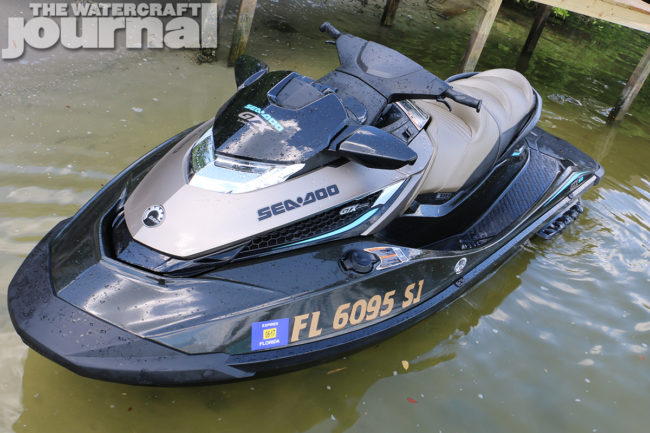
The addition of the Ergolock seat also had another happy benefit: a surprisingly massive glove box. Add to that the GTX’s removable watertight storage bin, and the Limited increases its storage capacity over three times over the previous generation — 42.8 gallons in total. Second and third passengers are not without, as the single-piece seat is stepped in a stadium fashion, with each spot raised above the first. Yet, the push for ergonomic superiority doesn’t end there:
Across the board, all models receive Sea-Doo’s innovative palm rest hand grips. True to their name, a padded blade graces each grip, allowing the palm to rest, and taking tension from the wrist. And as first developed back in 2008, the tilt steering not only allows for four angles of adjustment, but incorporate the engine gauge cluster into the steering mechanism, bringing the dash up and down with the bars for maximum visibility.
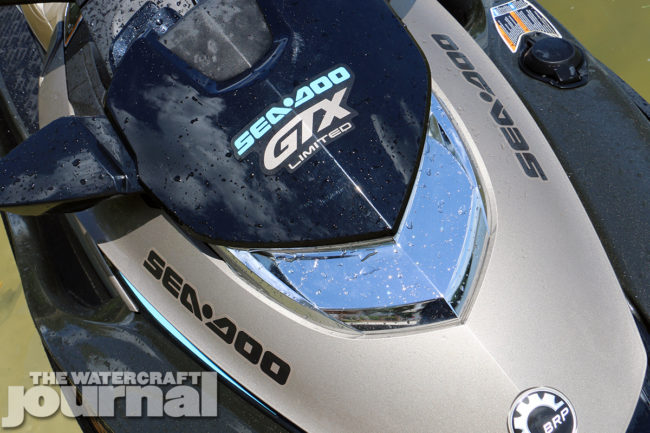
Speaking of which, Sea-Doo’s Interactive Multifunction Digital Information Center — a three-gauge cluster — speedometer, a LCD customizable multifunction digital screen, and tachometer — not only communicates to the driver performance and engine conditions, but the GTX’s VTS preset, fuel level and rate of consumption (both immediate and average), hour meter, compass, clock, depth gauge, and F-N-R indicator. Moreover, it also displays the craft’s iTC setting (ie. touring mode, sport mode, ECO mode).
iTC, or Intelligent Throttle Control, provides the GTX Limited 300 with three engine curves (as well as Cruise Control). Beginning in its default Touring mode gives the GTX access to full throttle, but curbs the ACE 300’s potential for hard acceleration, which the Sport mode provides. Throttle response is radically improved and makes for a more thrilling ride, but again, isn’t ideal for two-up cruising. Eco mode reduces the GTX’s top speed and acceleration, minimizing boost and optimizing fuel consumption.
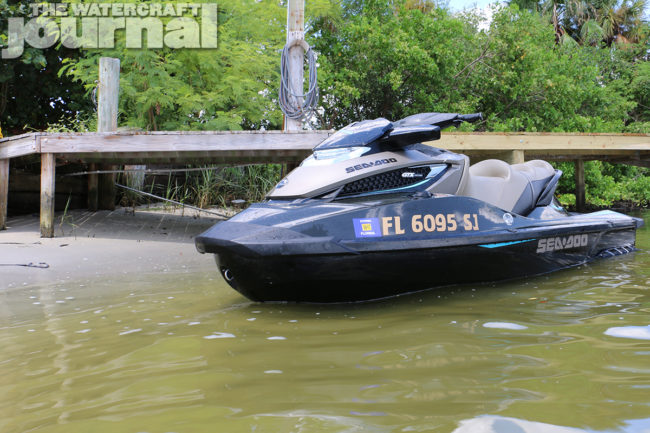
Another carryover from the Spark is the incorporation of the second generation of Sea-Doo’s iBR (Intelligent Brake & Reverse) system. The electronically activated braking and reversing system can help stop forward motion 160 feet sooner than a non-equipped machine, and does so moderately and without jolting the rider forward or over the handlebars. Not only that, but it also allows for slow controlled maneuverability in launching or docking, with the reverse bucket deployed in the neutral position when starting.
In addition to the GTX Limited’s exclusive Jet Black Metallic and Deep Pewter Satin coloring, the 300 comes equipped with a long list of features and accessories, including Sea-Doo’s hugely useful and innovated speed ties fixed to both the fairings and rear swim platform, a glove box organizer and hard-backed case, watercraft cover, a removable dry bag, safety kit, and additional digital gauge functions like the aforementioned depth finder and water temperature.
In all, the complete package comes in at $15,999, the identical price to the brand’s biggest competitor Yamaha and their SVHO-powered FX Cruiser. Yet, when weighing the vast amounts of digital functions, accessories included with and incorporated in the vehicle, the brutish 300-horsepower (never before has a Rotax engine been as close to its advertised horsepower. Tests have consistently produced power within 1-percent of the noted 300, with EPA/CARB tests resulting in a KW-converted 296 horsepower), and other innovations baked into the 2016 Sea-Doo GTX Limited 300, it’s not too hard to see its favorability in the luxury market.




